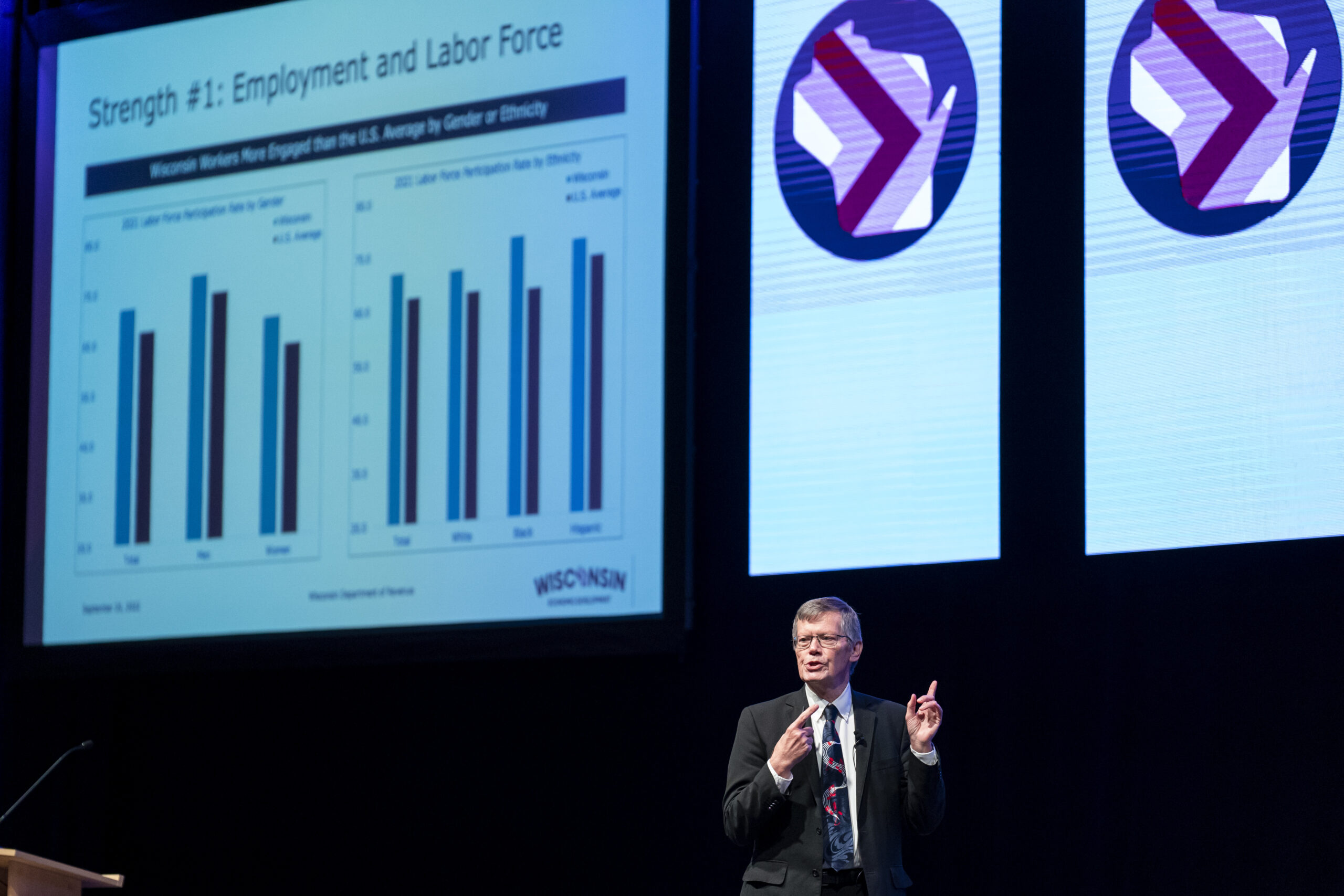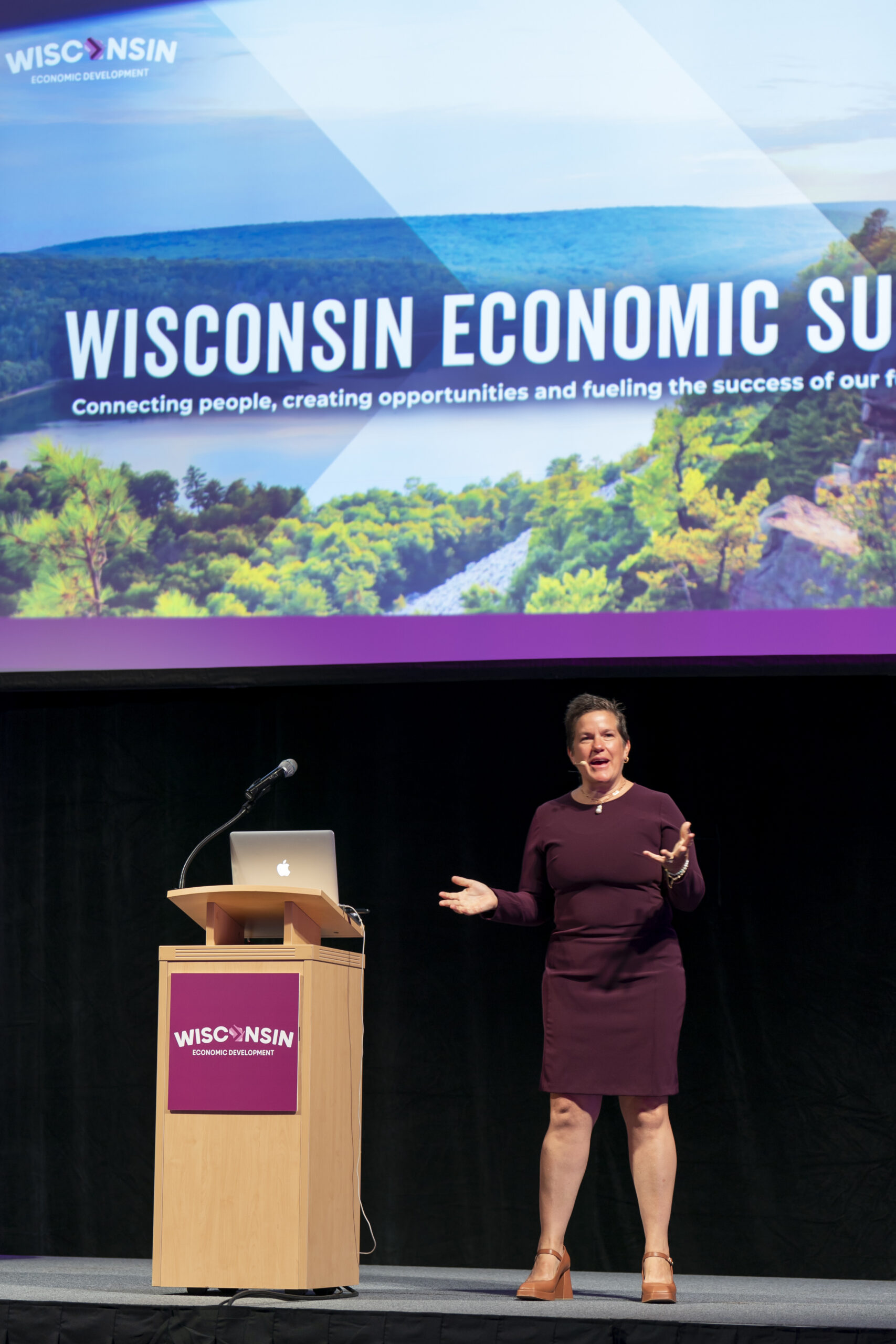
Economist John Koskinen highlights strengths, weaknesses and opportunities for the state’s economy.
Amid pandemic-inflicted economic and workplace shifts, Wisconsin is regaining its footing thanks to resilient entrepreneurs, creative government programs, innovative community partnerships and new ways of working.
Still, challenges remain. Access to quality child care, affordable housing and reliable broadband service are critical components of a thriving economy and are too often in short supply.
More than 350 participants at the inaugural Wisconsin Economic Summit in Appleton Sept. 20-21 examined the opportunities and shared potential solutions to the problems.
John Koskinen, chief economist for the state Department of Revenue, also identified strengths and weaknesses in the state’s economy. He sees strength in the state economy in an engaged workforce, growing entrepreneurship, manufacturing, public finances, and housing and construction.
“We have great people working here,” Koskinen said, noting that the state has a relatively balanced and engaged workforce by almost every demographic measure: ethnically, by gender, by age. “Where I think we are getting energing action is among young folks,” he said. “The 16-year-olds are twice as likely to be engaged in work in the state of Wisconsin than in the rest of the country. That sets up a nice lifetime pattern.”
But there are also weaknesses, including a troublesome labor shortage. “If we had every person in the right job, in the right industry, in the right location, we’d still be short 120,000 people,” he said.
Koskinen told the summit he sees threats to the state’s economy from inflation and Federal Reserve tightening driving up interest rates, wage pressure, energy prices and international events from war in the Ukraine to Chinese lockdowns disrupting supply chains.
The summit also probed opportunities for the future of Wisconsin’s economy, such as building a robust, inclusive workforce, using automation to build competitiveness, and building a strong, diverse business base.
Issues with the lack of quality child care, affordable housing and broadband were repeated by panelists throughout the summit. Solving those problems, they said, would make Wisconsin a more attractive place for employers and employees to put down roots and thrive.
For example, Watertown is working with area employers to address the need for high-quality child care with a cooperative model that encourages employer-sponsored child care at the local YMCA.
“There is a financial gap in child care. We need more than one funding source to make it sustainable,” Watertown Mayor Emily McFarland told the summit. “Our goal is to build communities that people want to live in.”
Attracting and retaining young people in Wisconsin cities is also a critical issue. In Wausau, providing downtown housing is a priority.
Mayor Katie Rosenberg said 3% of the city’s population lives downtown and officials would like to see that number hit 15%. Housing is a potential component of a downtown redevelopment project.
That kind of creativity is also at work in Door County. In Sister Bay, the Door County Housing Partnership came up with a community land trust model to build 8 to 10 affordable homes that will remain affordable in perpetuity, helping attract needed workers, such as teachers.
Several speakers also emphasized the need for reliable broadband service to accommodate employees’ remote work expectations.

WEDC Secretary and CEO Missy Hughes discusses takeaways from the inaugural Wisconsin Economic Summit.
“To fully participate in the economy, to fully have economic well-being, you need things like education, health care, a clean environment,” said Missy Hughes, WEDC secretary and CEO. “We try to look at it from a holistic view of what needs to happen in our economy.”
Government also has a leading role in providing momentum for economic development in ways that make sense for communities around the state. To provide targeted solutions, WEDC crafted the Workforce Innovation Grant program in collaboration with the state’s Department of Workforce Development.
The program, which awarded a total of $128 million, encourages development of leading-edge, long-term solutions that enable businesses to attract workers and help workers prepare for and connect to family-supporting careers.
Other sessions during the summit explored the promise of automation to power a bright economic future, the resilience and perseverance of Wisconsin business owners, creative approaches implemented with support from Workforce Innovation Grants, and the perspectives of WEDC’s Wisconsin Ambassadors.
Addressing the summit, Governor Tony Evers sounded an optimistic tone about Wisconsin’s path forward.
Evers told summit participants that although the state has found creative ways to leverage federal funds for economic development at the local level, there is more work to do.
“We’re going to do it together, because that’s what we do in Wisconsin,” Evers said. “When we’ve got a challenge ahead of us, we offer a hand. We help our neighbors. We work together for what’s best for our state and for each other.”
